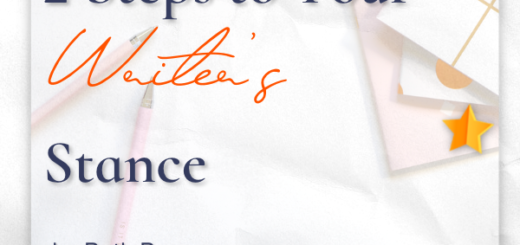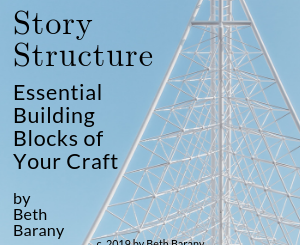Writing Mystery in a Sci-Fi World
Writing Mystery in a Sci-Fi World – How To Write the Future podcast, episode 63
“You need to indicate to the reader right away that you are writing a science fiction story.”
In “Episode 63. Writing Mystery in a Sci-Fi World,” host Beth Barany, creativity coach and teacher, and science fiction and fantasy novelist shares the difference between how a contemporary mystery novelist and a science-fiction mystery novelist will open their novel. Beth also answers a client’s question about their novel and discusses the opening of Michael Connelly’s book, The Late Show.
Platforms The podcast is available on Apple Podcasts | Google Podcasts | Buzzsprout | Spotify | Podcast Addict | Amazon Music | Youtube
RESOURCES
Free World Building Workbook for Fiction Writers:
https://writersfunzone.com/blog/world-building-resources/
Sign up for the 30-minute Story Success Clinic here:
https://writersfunzone.com/blog/story-success-clinic/
Get support for your fiction writing by a novelist and writing teacher and coach. Schedule an exploratory call here and see if Beth can support you today:
https://writersfunzone.com/blog/discovery-call/
The Late Show by Michael Connolly:
https://www.amazon.com/Late-Show-Michael-Connelly-ebook/dp/B01MYDJB6R/
ABOUT THE HOW TO WRITE THE FUTURE PODCAST
The How To Write The Future podcast is for science fiction and fantasy writers who want to write positive futures and successfully bring those stories out into the marketplace. Hosted by Beth Barany, science fiction novelist and creativity coach for writers.
Tips for fiction writers! This podcast is for you if you have questions like:
- How do I create a believable world for my science fiction story?
- How do I figure out what’s not working if my story feels flat?
- How do I make my story more interesting and alive?
This podcast is for readers too if you’re at all curious about the future of humanity.
Transcript for episode 63 Writing Mystery in a Sci-Fi World
Intro
Hey everyone, Beth Barany here with How To Write the Future podcast. This is a podcast that helps you create your science fiction or fantasy novel or any story that you’re working on and helps you create positive, optimistic futures. Because when we vision what is possible, we help make it so.
This week, I want to talk about the differences in writing contemporary fiction versus science fiction or fantasy. And I’m specifically niching it down to mysteries because that is what I write. And I was helping a client recently with her mystery story and it’s set in a far future and we were discussing the differences between the way a contemporary mystery novelist will open their novel and the way she needs to open her novel.
And so today I have a short discussion of the opener of Michael Connelly’s novel called The Late Show, where he introduces a new character, Renee Ballard.
So the biggest takeaway or the thing I want you to think about when you open your novel, your science fiction novel, that is maybe a mystery, thriller, suspense, maybe the mystery is the central plot of your story, But you need to indicate to the reader right away that you are writing a science fiction story.
Indicate Your Science Fiction Setting Right Away [h3]
So I’m working on the fifth book in my sci-fi mystery series. And I want to convey to the reader that we are not in a contemporary setting.
So my opening paragraph is all about the approach, her approach to a space station that I invented, that looks completely different than anything she’s ever seen with her history. So we know that we are in a different setting.
One of the predominant features of science fiction is the setting.
And because your reader is not going to be familiar with your setting, then you need to indicate through your point of view character what the setting is in a compelling way.
Here’s my first sentence of my current work in progress. It might change. But here’s the first sentence.
At first, she couldn’t see the station. Only a black dot or more like a messy splotch blocking out the stars.
So that’s our first indication that she’s approaching something, and I go on to describe it as:
The shape of a spider is what came to mind.
Use Familiar Objects As A Comparison to Make the Sci-Fi Setting Relatable
This brings up my second point, which is: the world is new that you’re introducing to the reader. So to convey what it looks like, it helps to compare it to something your audience already understands. And so in my case, I said the shape of a spider. Most of us understand what that is. I don’t have to explain any further. I do talk a little bit more about it.
Eight legs jutting out from a circular body. A slightly squashed body. More like an oval shape. The eight legs had two joints in them. A spider space station with long legs.
So I go into greater detail because as she approaches it, she’s also seeing it in greater and greater detail.
Opening Setting in Contemporary Stories vs. Science Fiction Stories
Now, when we compare that to contemporary stories, there’s a lot of things your reader will already understand.
In a moment I will share with you an analysis that I did for a client of The Late Show by Michael Connelly because we have been discussing and comparing and contrasting how contemporary novels differ from science fiction novels in their openings.
All right. So, if you have any questions about how do you translate your science fiction story into prose in a way that will be interesting to your readers please do reach out. I answer people’s questions in the show.
Alright, enjoy.
Analysis of the opening of The Late Show by Michael Connelly
So Ellen asks me about chapter one of Michael Connelly’s The Late Show, the first Renee Ballard book.
And she writes:
[quote] There is no mention of stakes at all. It just comes out later. Are you saying that something should be established per chapter?
Hey Ellen:
So there’s a big difference between what Michael Connelly is doing versus what you’re doing. You’re writing science fiction. So, there’s a lot of unknowns in your work.
Whereas, right here in The Late Show, in the opening of The Late Show, there’s a lot of things we already know. Anybody picking up this book can read the back cover, can know that these are cops.
And actually, we learn in the first paragraph that Ballard and Jenkins are cops. And we find out right in the second sentence that we’re in Ballard’s point of view, where it says right here:
There was already a patrol cruiser at the curb out front, and Ballard recognized the two blue suitors standing on the front porch of the bungalow with a gray-haired woman in a bathrobe.
The first sentence tells us: Two main characters, we don’t know yet which, if Ballard or Jenkins is the POV, is the point of view character.
We know where they are, and, we know when they are: “shortly before midnight,” and we know situation, that it’s the” first call of the shift.”
And, 99 percent of the people picking this book up will know from probably reading the back cover that this is a story about a cop, even if they’ve never read Michael Connelly before.
So and then the second sentence tells us, gives us a little bit more about the situation, and also tells us from Ballard’s perspective, using the jargon of her job, and also indicates the problem, that it’s something to do with a gray-haired woman.
And the stakes are implied right away. There’s some crime that happened. And by telling us- let’s see:
John Stanley was the shift’s senior lead officer– the street boss– and his partner was Jacob Ross.
Okay so, John and Jacob are the two blue suitors. That’s what’s implied in this last sentence.
And then we get a little bit of situation.
Jenkins says something and then right away we learn that they’ve been at two years in partnership and that Ballard is better at working with the female victims.
So right away the mention of the word “victim” tells us there’s something at stake for this, for the person.
And so, because it’s set in present day, we have a deep understanding built into our culture that cops help people; that a crime has been committed against this person. and we learn that right away. And we also learn something about the relationship between Jenkins and Ballard.
And we learn about the victim. We learn about her problem.
And it’s true, it starts quiet. It doesn’t start with a bang. But there’s an implied contract with the reader that there is going to be a bigger problem.
We know this story isn’t just going to be about a woman who has a stolen credit card. Otherwise, usually, there wouldn’t be a book on just that.
So here on page two, as she dives into the problem, Ballard, we learn that Ballard is smart. We have all this dialogue, and then we have Ballard already thinking about what could possibly happen. And this kind of insight:
Ballard moved in another direction, even though she wasn’t convinced that Lantana had not left her wallet behind at Ralph’s, where it could have been snatched by anybody.
So in detective stories, usually the person, the protagonist, is already trying to figure out what has happened right away.
And I actually only read the first two pages.
There’s enough in these first two pages to get us curious.
And there’s something about the voice of Ballard, it is very matter-of-fact, and she’s also showing us some details about the situation that make us want to know more.
So you don’t have to hit us over the head with everything in the first, in the opener of a story.
You just have to generate connection and curiosity.
So that’s my little spiel for just the first two pages of The Late Show, and we can absolutely continue to talk about it further.
You’re Invited to Send in Your Questions
So dear listeners, if you want help on how to generate connection and curiosity in the opening pages of your book, then I invite you to submit your questions, or even if you would like to be a guest on the podcast, I can look at your work with you — the first page of your work, and we can critique it together and you can get some feedback on how to make your story opening come alive.
All right. That’s it for this week for How To Write The Future podcast.
Write long and prosper.
Loved this episode? Leave us a review and rating here: https://www.buzzsprout.com/2012061
ABOUT BETH BARANY
Beth Barany teaches science fiction and fantasy novelists how to write, edit, and publish their books as a coach, teacher, consultant, and developmental editor. She’s an award-winning fantasy and science fiction novelist and runs the podcast, “How To Write The Future.”
Learn more about Beth Barany at these sites:
Author site / Coaching site / School of Fiction / Writer’s Fun Zone blog
CONNECT
Contact Beth: https://writersfunzone.com/blog/podcast/#tve-jump-185b4422580
Email: beth@bethbarany.com
LinkedIn: https://www.linkedin.com/in/bethbarany/
CREDITS
EDITED WITH DESCRIPT: https://www.descript.com?lmref=_w1WCA
MUSIC: Uppbeat.io
DISTRIBUTED BY BUZZSPROUT: https://www.buzzsprout.com/?referrer_id=1994465
SHOW PRODUCTION BY Beth Barany
SHOW NOTES by Kerry-Ann McDade
***
For more “How To Write the Future” episodes, go here.
If you’d like to invite Beth onto your podcast, drop her a note here.






